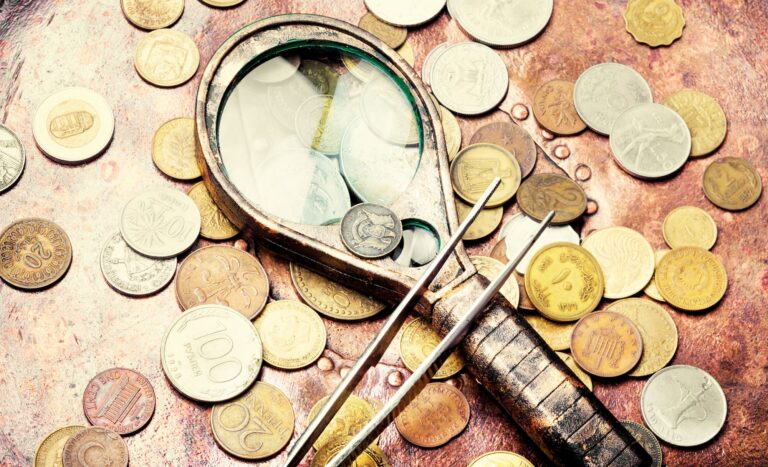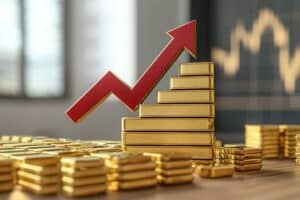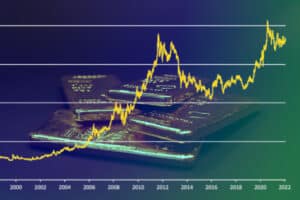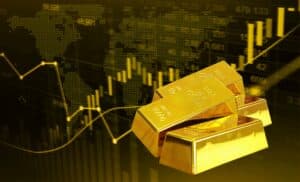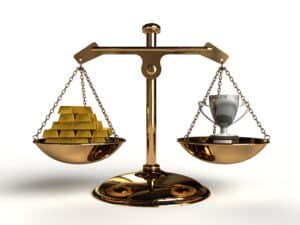Investing in coins can be a great way to diversify your portfolio, but it’s important to know the ins and outs of coin valuation tips. Understanding how various coin elements affect its worth is vital for buyers who want to make wise investments.
If you’re ready to learn about all things coin related, keep reading as we discuss the different valuation tips and tricks so you can get the most out of your money when buying or selling collectible coins.
What is Coin Valuation?
Coin valuation is the process of determining the worth of a coin based on its condition, rarity, and other factors. It requires knowledge of the coin’s history, composition, and market trends. Knowing how to value coins can help you make informed decisions when buying or selling coins.
Factors That Affect Coin Value
The value of a coin can be affected by several factors, including its age, condition, rarity, and demand.
The Coin’s Age
Age is an important factor in determining the value of a coin. Older coins have more historical significance and are often worth more than newer ones.
However, some modern coins may also have higher values due to their limited production or special features such as minting errors or unique designs.
Condition Of The Coin
Condition is another key factor when it comes to valuing coins. Coins in better condition will typically be worth more than those with wear and tear from circulation or storage over time.
To help determine its value based on its grade (e.g., uncirculated vs. circulated), a grading system was developed to evaluate a coin’s physical characteristics.
The Coin’s Rarity
Rarity plays an important role in determining the value of a particular type of coin since rarer coins tend to be worth more than common ones due to their scarcity and desirability among collectors.
Rarity can also refer to specific years where fewer coins were produced compared to other years resulting in higher prices for those particular dates even if they are not particularly valuable otherwise.
Market Demand
Market demand can affect the price of any given type of coin at any given time, depending on how many people want it versus how many are available for sale. If there is an abundance of coins with no buyers, prices may be lower; conversely, if there are lots of buyers but few sellers with what they’re looking for, prices may be higher.
Investigate popularity trends to help determine a coin’s market demand. Coins popular with collectors tend to hold their value better over time, so researching trends in collecting habits can indicate how much your investment might appreciate or depreciate in the future.
Grading System For Coins
Coin grading is an integral part of coin valuation as it helps determine the condition and rarity of a coin. Professional numismatists use a 70-point scale to grade coins from Poor (1) to Perfect Uncirculated (70). This system helps buyers and sellers agree on a fair price for coins based on their condition.
The first step in grading coins is assessing their physical characteristics, such as luster, strike, coloration, surface quality, eye appeal, and overall design. The second step involves determining the technical grade of the coin by examining factors like mintmark placement, die rotation, or other signs that indicate authenticity. Once these two steps are completed, the final grade can be assigned to the coin using the 70-point scale mentioned earlier.
Coins with higher grades are usually more valuable than those with lower grades because they tend to have fewer imperfections or wear marks due to handling over time. For example, an uncirculated Morgan silver dollar will typically fetch a much higher price than one that has circulated extensively and shows significant wear and tear from being handled over many years. Similarly, rarer dates or varieties may also command higher prices regardless of their condition since they are harder to find in any state of preservation.
4 Ways To Determine The Value of Coins
With the right knowledge, investors can identify coins worth more than their face value. Here are some tips on how to tell if a coin is rare or valuable.
Look For Mint Errors, Mint Marks, and Die Doubles
Machine-minted coins often contain mint errors, such as missing letters or numbers. These rare errors make the coins extremely valuable and sought after by collectors. People often don’t realize that both sides need examination since some details may only appear on one side, while others appear on both – so check every angle before deciding whether it’s worth investing in.
Don’t just consider errors; look at the mint marks themselves. Most U.S. coins have mint marks on their obverse (front side), while some older coins may have them on their reverse (back side). The location of these marks will affect the value of your coin in most cases.
Die double coins occur when the coin has been struck twice, creating two images instead of one. These errors usually increase the coin’s value significantly, so they’re worth keeping an eye out for. The most famous example of this type of error is the 1955 Lincoln penny, which was printed with two images instead of one.
Research Similar Coins
Do research to find similar coins and see what they are selling for online or at auctions, magazines, and websites. This will give you an idea of how much demand there is for your particular type of coin and, thus, its potential worth in today’s market conditions.
Consider Grade Quality
A numismatist considers five main components when determining a coin’s grade quality: strike, surface preservation, luster, coloration, and eye appeal. All these factors determine how much a collector might pay for it.
Coins that have been well preserved over time tend to be more valuable than those that show signs of wear or damage from circulation use. Similarly, coins with attractive features such as toning (color changes), luster (shine), or special markings will often fetch higher prices than those without them, even if they are identical in terms of metal content and design elements.
However, sometimes, coins that have been circulated and show signs of wear over time, such as scratches or dents, can add character and, therefore, value to certain pieces. Also, look out for ‘cleaning damage,’ which occurs when someone attempts to clean a dirty old coin with harsh chemicals – this often damages the surface irreparably, reducing its overall condition rating (and thus price).
Get Professional Appraisal
Getting a certified appraisal from a qualified dealer is a sure way to evaluate your coins accurately. Many dealers specialize in numismatics, so they know exactly what price range your specific type would fall under, depending on condition and rarity.
The Top 5 Most Valuable Coins And Their Prices
While these coins are extremely rare to come by and may be out of price range for some collectors, the most valuable coins include:
- The 1933 Saint-Gaudens Double Eagle Gold Coin: This rare coin is considered the most valuable gold coin in the world, with a value of up to $7.59 million. It was minted by the United States Mint and contains .9675 ounces of pure gold.
- The 1804 Silver Dollar: Also known as “The King of American Coins,” this silver dollar has an estimated value between $3 and $4 million due to its rarity and historical significance. It was struck from 1834-1835, but only 15 coins were produced during that period making it one of the rarest coins ever made.
- The 1794 Flowing Hair Silver Dollar: This is another rare coin with an estimated value ranging from $500,000 -$1 million depending on condition and grade level given by professional numismatists (coin experts). It was created after America gained independence from Britain in 1794 and is highly sought after for its beauty and historical importance.
- The 1913 Liberty Head Nickel: Despite being worth only five cents when it was first released into circulation in 1913, this nickel now holds a much higher price tag due to its rarity – anywhere between $2-$5 million. Only five exist today, making them incredibly hard to come across if you’re lucky enough.
- The 1943 Copper Penny: Although copper pennies weren’t supposed to be issued during World War II because copper was needed for ammunition production, some still managed to slip through the cracks. Thus, this coin was minted, which can fetch up to 1 million dollars if found in good condition.
5 Tips Every Coin Collector And Investor Should Follow
Whether you’re a beginner investor looking to make your first coin purchase or have years of coin collecting under your belt, every collector and investor should follow these few tips.
Do Your Research
Before you buy any coins, do your research. Learn about the history of coin collecting and the different types of coins available. Familiarize yourself with grading standards and pricing guides to make informed decisions when buying or selling coins.
Check For Authenticity
When purchasing a rare coin, it is important to verify its authenticity before making a purchase. Have an expert examine the coin closely to ensure it is genuine.
If possible, have the coin certified by one of the major third-party authentication services such as PCGS or NGC (Professional Coin Grading Service or Numismatic Guaranty Corporation). This will provide additional assurance that your investment is sound and can potentially increase its value if you sell it later.
Know Your Budget And Buy What You Like
Rare coins can be expensive investments, so it’s essential to set a budget beforehand and stick to it no matter what! Decide how much money you are willing to spend on each piece before shopping for them – this will help keep your spending in check while allowing you room for growth within your collection over time.
Collecting rare coins should be enjoyable. Don’t just focus on potential returns; buy pieces that speak directly to your interests, whether related to historical events or simply aesthetically pleasing designs. That way, even if prices fluctuate up or down over time, at least you had fun building out your collection along the way.
Understand Rarity And Demand In The Coin Market
When it comes to rare coins, rarity is relative. The coin you purchase may be rare compared to coins in your pocket, but that doesn’t necessarily make it valuable. Other factors like demand also come into play when determining a coin’s worth.
The 1950-D Jefferson nickel is an example of this concept. It had the lowest mintage of any Jefferson in history, which should make it rare; however, due to heavy hoarding at the time of its release, top-grade examples are less expensive than other Jeffersons with higher mintages, such as 1939-D or 1942-D.
The 1909-S VDB Lincoln provides another classic example. With 484,000 minted, it is far more available than lower mintage coins yet still more costly in most grades due to high demand from collectors who want one for their collection but can never find enough examples for everyone who wants one.
These two cases demonstrate how rarity and demand work together when determining a coin’s value. Even if a coin has low mintage numbers doesn’t mean that collectors will highly value it. Understanding rarity and demand is essential when investing in precious metals as part of your retirement portfolio strategy.
Buy From Reliable Dealers
When buying precious metals, the best way to ensure you get what you pay is to buy from reliable dealers. These dealers have years of experience and a proven track record of providing quality products and services. They should also be able to provide references or testimonials from previous customers.
It’s crucial that these dealers understand grading standards and accurately assess the condition of the coins or bullion they sell. This will help ensure you get what you expect when purchasing your precious metals investments. Additionally, look for a dealer with an established return policy in case of any issue with your purchase.
Buy Gold & Silver Coins From Noble Gold Investments
If you’re ready to start investing in gold coins, silver coins, or rare coins of any type, you should only purchase from a reputable coin dealer such as Noble Gold Investments. Our team has the expertise and knowledge to help you make informed decisions about your coin purchases and the reputation to ensure you’re not buying counterfeit or stolen coins. Our customers can purchase gold and silver coins to store at home or purchase them in a precious metals IRA for added tax advantages. Interested in learning more? Give us a call today to speak to one of our support team members about how to get started.


